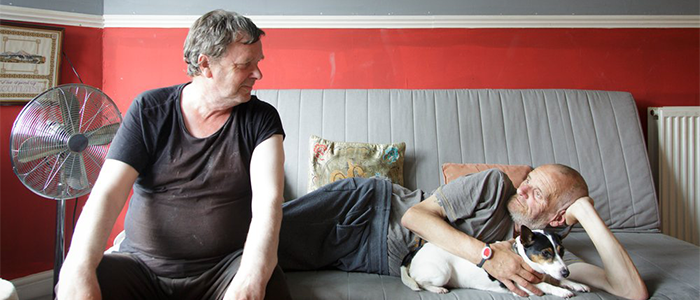UofG Student Photography Exhibition at the ARC
Published: 20 April 2023
PhD student Oona shares her experiences of curating a photography exhibition at the University of Glasgow’s Advanced Research Centre (ARC).

PhD student Oona Dooley shares her experiences of curating a photography exhibition at the ARC.
Following advice from my PhD supervisor, I recently put myself forward to help a team of sociologists transform their research on marginalised experiences of dying into a public exhibition. Two months later, we are currently preparing to display the first iteration of The Cost of Dying (25 April-5 May 2023) at the University of Glasgow’s Advanced Research Centre (ARC). Featuring arresting new work by documentary photographer Margaret Mitchell, this collaborative project blends sociological findings with stories and photos collected from the research participants and their loved ones.
As a curatorial PhD researcher in Information Studies, I anticipated that stepping into this 4-year project at such a late stage would be a challenge (however rewarding!). I was originally asked to join as a curatorial consultant, but it soon became clear that this curation (the driving force of an exhibition) was well underway, and with considerable momentum. The Dying in the Margins research team, with Dr Naomi Richards and Dr Sam Quinn at the helm of exhibition development, had already been working as curators alongside their research participants and commissioned photographer Margaret Mitchell to forge their ideas and overarching messages.
My role, then, became to channel these plans in both a practical and conceptual sense. Practically speaking, exhibition production work concerns setting the tone--i.e., building context for a public audience, designing accessible text panels, and directing installation. In broader terms, I assumed the role of mediator, coaxing a range of tidal pulls into a cohesive vision—one which not only conveys the precarity, discomfort, and hardship faced by real people living and dying among us, but also lends insight into their daily routines, companionships, and acts of resilience.
Destigmatising the sensitive topic of end-of-life experiences in a public setting, I also had to advocate for both the research impact and the creative autonomy of the photographer. To use the metaphor of a chariot led by a team of horses, it was my job as producer to keep the horses (or curatorial forces) working together and moving at the same pace, carrying the chariot (or project) forward. This was often a delicate balancing act, but gratefully not a challenge any of us had to face alone, thanks to a constructive and responsive exhibition team. From the outset, we all agreed on the matter of prioritising the many voices of the research participants while capturing the complexity of their individual situations, using primarily visual language. In the end, I believe we managed to lay bare a range of end-of-life experiences in an empowering, provocative, and open-ended way—asking audiences to consider how our communities, government, and healthcare services can better care for our dying neighbours.
As we approach the opening of the exhibition, I look forward to witnessing how this exhibition occupies and transforms the physical and social space of the new ARC building on campus. Moreover, I look forward to the continued transformation of this body of work as it is encountered, inspected, used, and reiterated in new contexts.
Everyone is welcome to visit the exhibition. Please see the Eventbrite page for more details and to register.
First published: 20 April 2023
<< 2023
Read more Richards N, Quinn S, Mitchell M, Carduff E, Gott M. The viability and appropriateness of using visual methods in end of life research to foreground the experiences of people affected by financial hardship and deprivation. Palliative Medicine. 2023;37(4):627-637. doi:10.1177/02692163221146590

